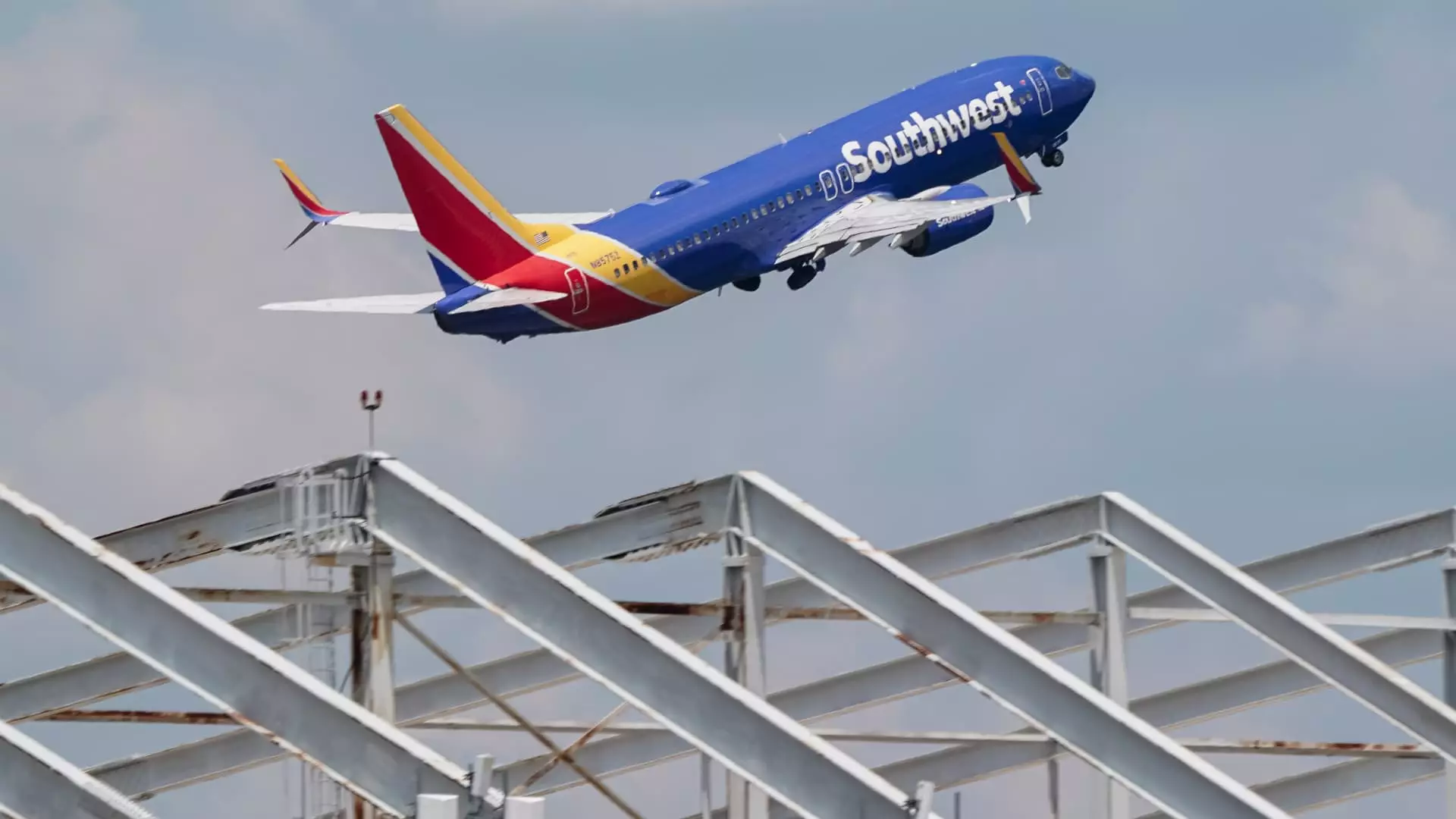Southwest Airlines has recently reported a decline in its third-quarter profits compared to the same period last year. However, the results managed to beat Wall Street’s forecasts, highlighting the airline’s ability to adapt in a challenging economic environment. With the backdrop of an activist investor, Elliott Investment Management, seeking to exert influence over the airline’s operations, Southwest has made strategic moves to strengthen its financial standing and governance.
The company announced a collaborative agreement with Elliott, which not only prevents a potentially disruptive proxy fight but also sees six of Elliott’s nominated candidates join the board. This arrangement ensures that CEO Bob Jordan remains at the helm, maintaining continuity in leadership during this transition period.
Looking ahead, Southwest forecasts a 3.5% to 5.5% increase in revenue per unit for the fourth quarter, despite anticipating a 4% decrease in capacity compared to the previous year. This contrarian approach suggests that the airline is strategically scaling back operations to focus on profitability rather than simply filling seats. However, operational expenses, excluding fuel, are projected to rise significantly, by up to 13%. This dual focus on revenue growth coupled with cost management reflects a careful balancing act that may prove essential for the airline’s long-term viability.
Despite these headwinds, Southwest remains optimistic about travel demand, especially as the holiday season approaches. The company noted strong bookings, indicating that the leisure travel sector continues to demonstrate resilience, which is encouraging considering the fluctuating economic climate.
On the operational front, Southwest is implementing a three-year plan aimed at enhancing its financial performance, with expectations of adding $4 billion to earnings before interest and taxes by 2027. A key component of this plan involves authorizing a stock buyback program worth $2.5 billion, reflecting confidence in the airline’s future prospects. Initially, they will repurchase $250 million worth of shares through an expedited program, highlighting their commitment to shareholder value.
Additionally, the airline is initiating significant changes to its long-standing open seating policy, introducing paid seat assignments and added legroom options. This marks the most substantial shift in Southwest’s fare structure in over half a century, suggesting a move towards a more traditional airline pricing model that could attract a different demographic of travelers willing to pay a premium for premium services.
Performance Metrics Compared to Expectations
In analyzing Southwest’s performance for the third quarter, key metrics reveal a complex but promising financial landscape. The airline reported earnings of 15 cents per share, surpassing analysts’ consensus expectations of a break-even figure. Revenue reached $6.87 billion, up over 5% year-on-year, again ahead of the anticipated $6.74 billion. However, net income fell a considerable 65% year-on-year to $67 million, reflecting the challenges of rising operational costs amidst fluctuating demand.
While Southwest Airlines faces hurdles in the form of profit declines and rising expenses, its proactive strategies and partnerships signal a forward-thinking approach. By refining its operations and governance, the airline aims to reclaim market strength and maintain its status as a significant player in the aviation industry. The path forward may be fraught with challenges, yet Southwest’s commitment to adaptation and innovation could pave the way for a robust recovery.

